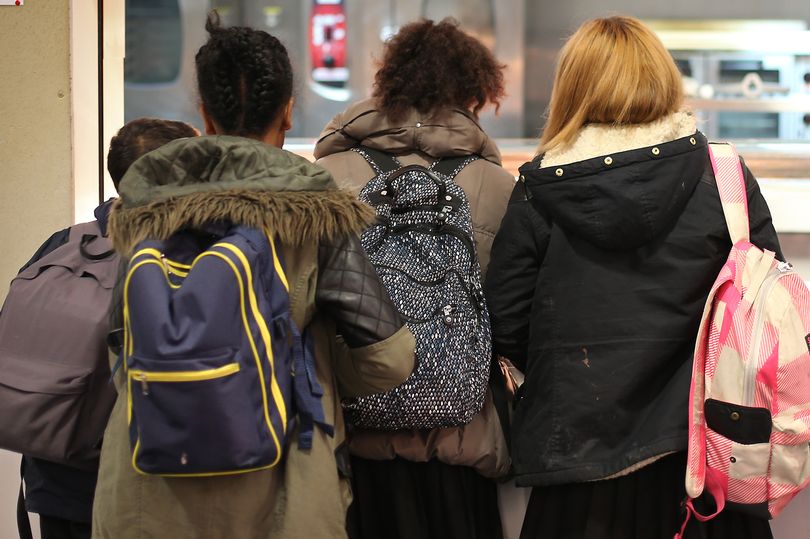International Kidnapping Expert, Olav Ofstad has written a new book dealing with all aspects of surviving kidnappers’ and here he tells us how to protect our children
Thousands of children are abducted each year.
Even parents living in comparatively safe environments may devote a lot of energy to ensure their children’s safety.
Driving them to school, to friends and to sports activities, they rarely let them out of sight.
However, we cannot always be there to guard our children, and part of growing up is to relate more and more to the outside world.
So how to protect children as they grow up?
Babies and Toddlers

The advice here is quite simple.
Small children need full time oversight by responsible adults. They have limited understanding of danger and are unable to relate to the risk of abduction.
6-10 years old

At this age the child’s understanding of the outside world, language and logic has increased, and we are increasingly able to talk to the child about risks and precautions.
Most parents try to instil some caution in their kids, telling them to be home before dark, avoid certain areas and never to accept goodies or a lift from strangers.
They are, however, still gullible and believe what they see. A stranger acting nice is considered to be nice, and your advice may be easily forgotten.
A more effective approach is probably to take the child with you to the street or the school and ask questions like:
What if someone stops his car and offers you a lift home, what will you do?
What if that person says he is a friend of dad?
What will you do if an adult person or a teenager in the neighbourhood invites you into his home?
Children learn traffic rules better when out in the traffic, and using the scene where threats might occur is likely to enhance the effect of security training.
Also, if the child is provoked to express a stand, it is more likely that it sticks.
Children at this age are not good at associating different situations. So, as a thorough parent you might wish to use what if questions for all situations considered threatening.
To avoid overwhelming the child you must, however, allow some space between the lessons, but do repeat them from time to time.
What about social media? You should set rules of conduct early on, before habits develop. Use of the internet should happen within time limits, and in a room where you are present.
Once your child is exploring social media, you must keep a tab on what he is doing.
To detect possible dangers you might also discreetly monitor your children’s verbal communication about friends and contacts.
11-13 years old

At this stage, the kids will be moving around a bit more freely, expanding their outreach and coming home later. Again, you should be proactive. Talk to your kid about routines and limitations, and about staying in touch on the phone. Knowing where your child is, is a key security issue. Also urge your kids to call you immediately using a pre-set one-digit shortcut if they experience something suspicious.
The ‘what if’ scenarios mentioned above should now be supplemented with training in standing up for yourself, stating a clear ‘no’, running away from unpleasant situations and, if need be, defending yourself.
Puberty is an emotionally volatile period, signified by hormonal changes and a quest for identity. This implies self-centeredness, but also an inclination to explore new social connections. You must underscore the need for caution regarding strangers, and keeping a tab on the child’s social media activities becomes even more important.
14-17 years old

The youngster is now well developed intellectually, but lacks life experience and typically overestimates her own capacity to handle challenges. Subject to culture, she will further expand her social outreach and start attending parties. Her peer group may provide some security against strangers, but the group itself could include negative elements, such as alcohol and drugs. Your kids may at times have stayed overnight with their best friends. Now they may wish to do so after parties.
How can you retain a fair amount of control?
Again, be proactive. Pick a peaceful moment to discuss party going, time to come home, means of transportation, touching base on the phone, etc. With luck, you will agree on some rules, but at the end of the day, you have to set them. If you wait till the demands emerge, you will have a tougher fight. What parent has not heard that ‘all other kids have much more freedom’? You might link up with other parents and perhaps agree on shared security norms.
As youngsters start going to town, perhaps visiting cafes and pubs, they must be told to stick to their own group of friends, watching out for one another. Girls must escort each other to the bathroom.
What about the internet?

A key point is a ban on meeting with strangers the youngster has linked up with on the net. Another is limitations on sharing photos, information about name, family and school, phone number, and home address. A nickname should always be used in chat rooms, and the child should commit to informing you about anything uncomfortable.
Tracing devices

Traceable phones are easily available, but they may give you a dilemma. Should you silently install a tracing app without telling your son? If you do, he will see it as serious mistrust when he finds out. And if you do tell him, he might hate your ‘spy’ arrangement. A solution may be to agree that you will only use the app if you cannot reach him on the phone, if he does not come home when agreed, or if you have other specific reasons to worry.
Some concerned parents provide their child with a small tracing tag, hidden on his/her person. Unless discovered by a kidnapper, this might save your child. Beware, however, that children who know that they are carrying such a thing, are likely to worry more than you want them to.
In my studies of the subject I have found limited literature that offer parents hands on practical advice. The most useful discussion I have come across is a chapter in D.M. Concannon’s book Kidnapping: An investigator’s Guide, and much of the following is borrowed from her presentation.
Sourced: Mirror

